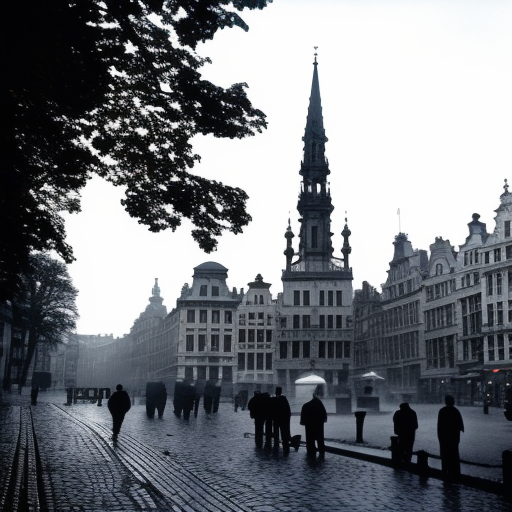Bombardment of Brussels: A Devastating Attack on a Historic City
The Bombardment of Brussels refers to a devastating attack that took place on August 13, 1914, during World War I. The German army, in an attempt to break through Belgian defenses, targeted the city of Brussels with heavy artillery fire. This event resulted in significant damage to the city and civilian casualties, leaving a lasting impact on the people and infrastructure of Brussels.
Background:
At the outbreak of World War I, Belgium found itself caught in the middle of the conflict. Despite its neutrality, Germany sought to quickly conquer Belgium to gain access to France. In August 1914, German forces launched an offensive against Belgium, leading to the Battle of Liège. As the German army advanced towards Brussels, they encountered fierce resistance from Belgian troops.
The Bombardment:
On August 13, 1914, German artillery units positioned themselves around Brussels and began bombarding the city. The bombardment lasted for several hours, with shells raining down on various parts of Brussels. The German forces targeted strategic locations, such as railway stations, government buildings, and residential areas, causing widespread destruction and chaos.
Impact on the City:
The Bombardment of Brussels had a profound impact on the city and its inhabitants. Numerous buildings were destroyed or severely damaged, including historic landmarks, churches, and residential areas. The iconic Palais de Justice, one of Brussels’ most significant architectural treasures, suffered extensive damage during the attack.
The civilian population also bore the brunt of the bombardment. Many innocent people lost their lives or were injured as a result of the shelling. The attack created a sense of fear and uncertainty among the residents of Brussels, who had to endure the destruction of their homes and the loss of loved ones.
International Reaction:
The Bombardment of Brussels garnered international attention and condemnation. The attack on a neutral city, known for its cultural and historical significance, shocked the world. The destruction of valuable heritage sites and the loss of civilian lives were seen as a violation of the rules of war.
Aftermath:
In the aftermath of the bombardment, the people of Brussels rallied together to rebuild their city. Efforts were made to restore damaged buildings and infrastructure, although some landmarks could never be fully restored to their former glory. The Bombardment of Brussels served as a rallying cry for Belgian resistance against the German occupation.
The attack on Brussels also had wider implications for the course of World War I. The destruction caused by the bombardment further fueled international outrage against Germany and strengthened the resolve of the Allied powers to defeat the Central Powers.
Legacy:
The Bombardment of Brussels remains a significant event in the history of Belgium and World War I. It serves as a reminder of the devastating impact of war on civilian populations and the importance of preserving cultural heritage. Today, the scars of the bombardment can still be seen in the form of restored buildings and memorials that commemorate the event and honor its victims.
In conclusion, the Bombardment of Brussels was a tragic event that left a lasting impact on the city and its people. The attack on a neutral city shocked the world and highlighted the brutality of war. The destruction caused by the bombardment served as a rallying cry for resistance and strengthened the resolve of the Allied powers. The legacy of the Bombardment of Brussels serves as a reminder of the human cost of conflict and the importance of preserving history.












